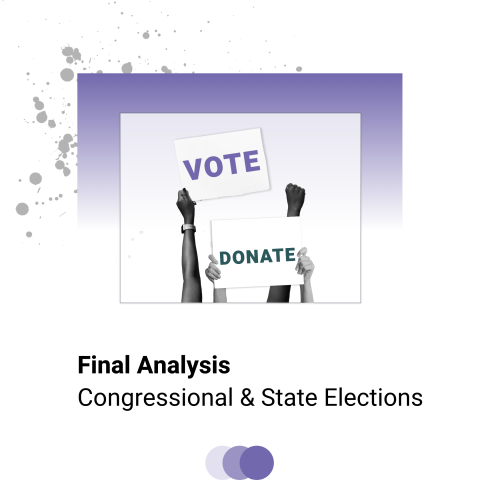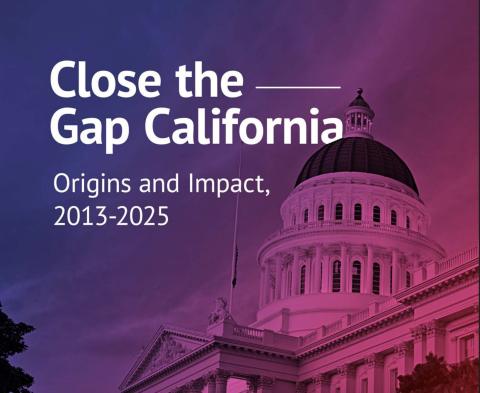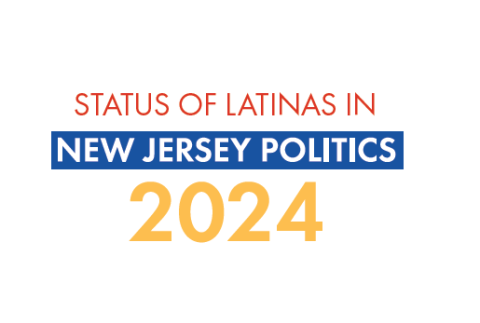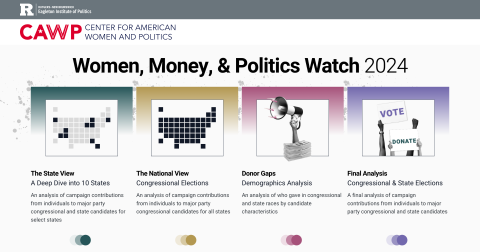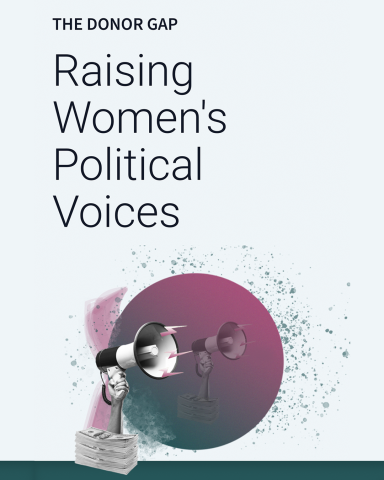Black Women in American Politics 2025
by Chelsea Hill
ReportCandidates and CampaignsPolitical PartiesGender and Race/EthnicityElective OfficeFederal ExecutiveCongressStatewide ExecutiveState LegislatureLocalFinal Analysis: Women, Money, & Politics Watch 2024
by Kira Sanbonmatsu and Shikshya Adhikari
ReportCAWP Women, Money, and Politics SeriesResearchCAWP ScholarCAWP Women, Money and Politics SeriesCandidates and CampaignsGender and Race/EthnicityCongressState LegislatureWomen in Election 2024: Stalled Progress
by Kelly Dittmar, Ph.D.
ReportResearchCAWP ScholarElection WatchCandidates and CampaignsPolitical PartiesGender and Race/EthnicityCongressStatewide ExecutiveState LegislatureClose the Gap California: Origins and Impact, 2013-2025
By Kelly Dittmar, PhD
ReportResearchCAWP ScholarCandidate RecruitmentCandidates and CampaignsImpact of Women Public OfficialsWomen and Term LimitsGender and Race/EthnicityState LegislatureFrom Data to Diversity 2025: The Demographics of New Jersey's Elected Officials
by Jean Sinzdak and Chelsea Hill
ReportFrom Data to Diversity ProjectResearchNew JerseyGender and Race/EthnicityCongressState LegislatureLocalStatus of Latinas in New Jersey Politics 2024
by Chelsea Hill
ReportResearchNew JerseyGender and Race/EthnicityCongressStatewide ExecutiveState LegislatureWomen, Money, and Politics Watch 2024
by CAWP
ReportCAWP Women, Money, and Politics SeriesResearchCAWP Women, Money and Politics SeriesCandidates and CampaignsGender and Race/EthnicityCongressState LegislatureRethinking Women’s Political Power
by Kelly Dittmar, Ph.D.
ReportResearchCandidate RecruitmentCandidates and CampaignsWomen Voters and the Gender GapWomen and Term LimitsGender and Race/EthnicityElective OfficeCongressStatewide ExecutiveState LegislatureLocalThe Donor Gap
by Kira Sanbonmatsu, Ph.D.
ReportCAWP Women, Money, and Politics SeriesResearchCandidates and CampaignsPolitical PartiesGender and Race/EthnicityStatewide ExecutiveState LegislatureFrom Data to Diversity I: The Demographics of New Jersey's Elected Officials
by Jean Sinzdak and Chelsea Hill
ReportFrom Data to Diversity ProjectResearchNew JerseyGender and Race/EthnicityCongressState LegislatureLocal



